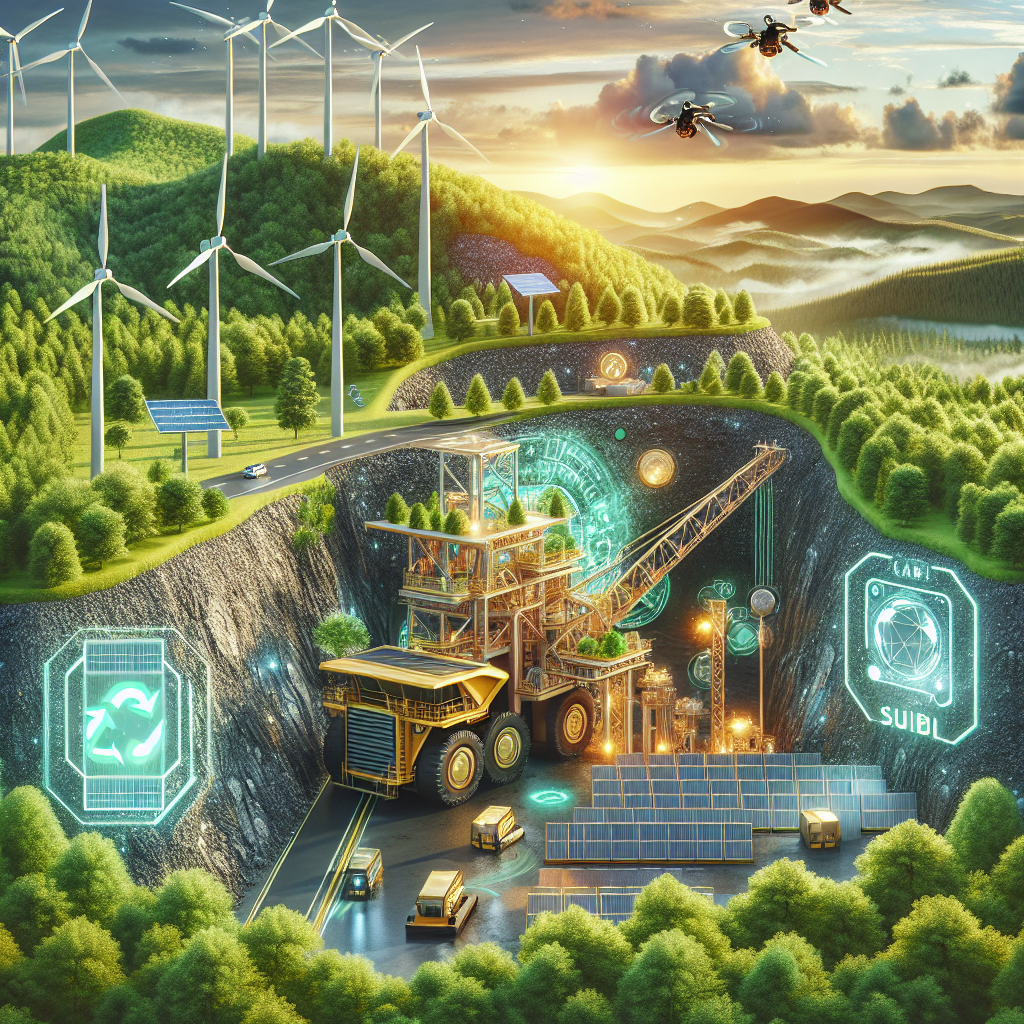AI Technologies for Sustainable Mining Practices
Mining is a critical industry that provides the raw materials needed for countless products and infrastructure projects. However, the traditional methods of mining can have significant negative impacts on the environment, including deforestation, water pollution, and habitat destruction. In recent years, there has been a growing push towards more sustainable mining practices, with the integration of AI technologies playing a crucial role in achieving this goal.
AI technologies have the potential to revolutionize the mining industry by improving efficiency, reducing waste, and minimizing environmental impact. From autonomous vehicles and drones to predictive analytics and machine learning algorithms, there are a wide range of AI tools that can be used to make mining operations more sustainable. In this article, we will explore some of the key AI technologies that are being used in the mining industry to promote sustainability.
Autonomous Vehicles
One of the most significant advancements in mining technology in recent years has been the development of autonomous vehicles. These vehicles are able to operate without a human driver, using sensors and GPS technology to navigate the mine site and carry out tasks such as drilling, blasting, and hauling. By removing the need for human operators, autonomous vehicles can improve safety, reduce operating costs, and increase productivity.
In addition to these benefits, autonomous vehicles can also help to reduce the environmental impact of mining operations. By optimizing routes and minimizing fuel consumption, these vehicles can lower carbon emissions and decrease air pollution. This is especially important in remote mining locations where access to clean air and water is limited.
Drones
Drones are another AI technology that is being increasingly used in the mining industry to improve sustainability. These unmanned aerial vehicles can be equipped with cameras, sensors, and other tools to gather data on the mine site, monitor environmental conditions, and conduct inspections. Drones can provide real-time information on areas of the mine that are difficult or dangerous to access, allowing for quicker decision-making and improved safety.
In terms of sustainability, drones can help mining companies to monitor and mitigate environmental impacts such as deforestation, water pollution, and soil erosion. By collecting data on vegetation cover, water quality, and land use, drones can help to identify areas that are at risk and implement measures to protect the environment.
Predictive Analytics
Predictive analytics is a branch of AI that uses historical data and statistical algorithms to forecast future trends and behavior. In the mining industry, predictive analytics can be used to optimize production schedules, predict equipment failures, and identify potential environmental risks. By analyzing data on factors such as ore grade, equipment performance, and weather conditions, mining companies can make more informed decisions that lead to greater efficiency and sustainability.
For example, predictive analytics can be used to optimize the use of resources such as water and energy, reducing waste and lowering operating costs. By predicting when equipment is likely to fail, maintenance can be scheduled in advance, minimizing downtime and reducing the risk of environmental accidents. Overall, predictive analytics can help mining companies to operate more sustainably by maximizing resource efficiency and minimizing environmental impact.
Machine Learning Algorithms
Machine learning is a subset of AI that uses algorithms to analyze data, identify patterns, and make predictions without being explicitly programmed. In the mining industry, machine learning algorithms can be used for a wide range of applications, including ore grade estimation, equipment optimization, and environmental monitoring. By training these algorithms on large datasets, mining companies can leverage the power of AI to improve their operations and reduce their environmental footprint.
One example of how machine learning is being used in mining is in the area of ore grade estimation. By analyzing data on the composition of ore samples and the geological characteristics of the mine site, machine learning algorithms can predict the grade of ore in a particular area. This information can then be used to optimize the mining process, ensuring that only the highest-grade ore is extracted and processed, leading to higher yields and lower waste.
FAQs
Q: How can AI technologies help to improve sustainability in the mining industry?
A: AI technologies such as autonomous vehicles, drones, predictive analytics, and machine learning algorithms can help mining companies to operate more efficiently, reduce waste, and minimize environmental impact. By optimizing production schedules, monitoring environmental conditions, and predicting equipment failures, AI technologies can help to promote sustainability in the mining industry.
Q: What are some of the environmental benefits of using AI technologies in mining?
A: AI technologies can help to reduce the environmental impact of mining operations in a number of ways. For example, autonomous vehicles can optimize routes and minimize fuel consumption, reducing carbon emissions and air pollution. Drones can monitor environmental conditions and identify areas at risk, allowing for quicker action to protect the environment. Predictive analytics can optimize resource use and reduce waste, while machine learning algorithms can improve ore grade estimation and equipment optimization.
Q: How can mining companies implement AI technologies in their operations?
A: To implement AI technologies in their operations, mining companies should first assess their specific needs and goals. They should then identify the AI tools that are best suited to their requirements and invest in the necessary technology and infrastructure. Training employees on how to use AI technologies effectively is also crucial, as is collecting and analyzing data to feed into the algorithms. By integrating AI technologies into their operations, mining companies can improve efficiency, reduce costs, and promote sustainability.
In conclusion, AI technologies have the potential to revolutionize the mining industry and promote sustainability in a variety of ways. From autonomous vehicles and drones to predictive analytics and machine learning algorithms, these tools can help mining companies to operate more efficiently, reduce waste, and minimize environmental impact. By harnessing the power of AI, the mining industry can move towards more sustainable practices that benefit both the environment and the bottom line.

